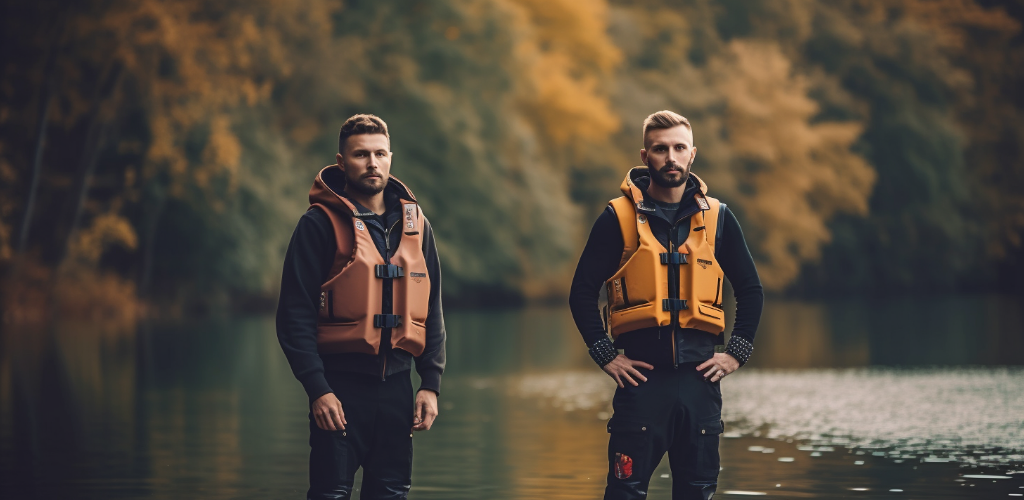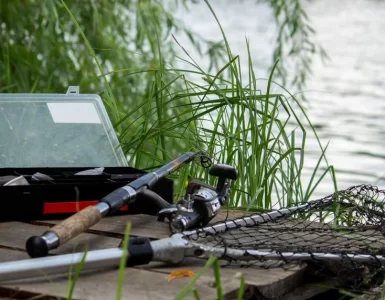Have you ever wondered about the difference between a wakeboard vest and a life jacket? If you’re a water sports enthusiast, safety-conscious individual, or someone who’s just starting to dip their toes into the world of water sports, this information will be highly relevant to you. Safety gear in water sports is not just a recommendation—it’s a necessity. Let’s dive right into it.
What is a Wakeboard Vest?
First off, let’s talk about wakeboard vests. A wakeboard vest, as the name suggests, is a type of safety gear primarily designed for wakeboarding. Its main purpose is to provide buoyancy and protect the wearer from impacts. Made from lightweight, flexible materials like neoprene, these vests are known for their snug fit and stylish designs. They’re designed to facilitate high-speed maneuvers and tricks, which are integral parts of wakeboarding.
What is a Life Jacket?
On the other hand, a life jacket, often referred to as a personal flotation device (PFD), is designed with a singular focus – to keep the wearer afloat, regardless of their swimming ability. Typically, life jackets are made from buoyant materials like foam and include additional safety features like whistle attachments, reflective tape, and even lights. Unlike wakeboard vests, life jackets are not sport-specific and are used in various aquatic activities, from boating to kayaking.
Comparing Wakeboard Vests and Life Jackets
So, you’re keen on water sports and you’re wondering about the best safety gear for your activities? Let’s compare wakeboard vests and life jackets in terms of buoyancy, comfort, freedom of movement, and safety. These factors can significantly impact your performance and overall experience.
Buoyancy
When it comes to buoyancy, both wakeboard vests and life jackets offer flotation, but to varying degrees. Life jackets provide higher buoyancy, designed to keep you afloat in water with minimal effort. On the contrary, wakeboard vests offer less buoyancy, which may require more swimming skill and effort to stay above water. But why is this so, you might ask? This is primarily because wakeboard vests are designed to offer more freedom of movement, which brings us to our next comparison point.
Comfort and Freedom of Movement
Water sports enthusiasts often favor wakeboard vests for their comfort and unrestricted movement. The design of a wakeboard vest is typically sleeker and less bulky compared to a life jacket. This allows for greater flexibility and ease of movement, a crucial factor in performing tricks and jumps on your wakeboard. But what about life jackets? Life jackets, while bulkier, are designed with safety as the top priority. Although they may limit movement to some extent, they ensure that you stay afloat even in challenging water conditions, making them a reliable choice for safety.
The Pros and Cons of Wakeboard Vests
Now that we’ve compared the two, let’s dive deeper into the pros and cons of using a wakeboard vest specifically.
- Pros of Wakeboard Vests
- Greater freedom of movement and flexibility, ideal for performing stunts and tricks.
- More comfortable and less restrictive due to their sleek design.
- Can be more stylish and modern-looking, which can be a plus for some.
- Cons of Wakeboard Vests
- Provide less buoyancy, requiring more effort to stay afloat.
- May not be suitable for weak swimmers or those new to water sports.
- May not comply with certain safety regulations, limiting their use in some areas or events.
The Pros and Cons of Life Jackets
Let’s now turn our attention to life jackets. Just like wakeboard vests, life jackets have their own set of advantages and disadvantages. What are they? Let’s take a closer look.
- Pros of Life Jackets
- High buoyancy: Life jackets are designed to provide a higher level of buoyancy than wakeboard vests. This makes them ideal for those who are not confident swimmers or for situations where the risk of drowning is high.
- Safety standards: Life jackets must meet certain safety standards. This means that they are tested for effectiveness and reliability.
- Visibility: Life jackets are often brightly colored or have reflective panels, making the wearer more visible in the water.
- Designed to turn an unconscious person face up: One of the biggest advantages of life jackets is that they are designed to turn an unconscious person face up in the water, something a wakeboard vest can’t do.
- Cons of Life Jackets
- Bulky design: Life jackets are often bulkier than wakeboard vests, which can limit mobility and comfort, especially for water sports.
- Heat retention: Because they cover more of the body, life jackets can make the wearer hot, particularly in warm weather.
- May be uncomfortable: Some people find life jackets uncomfortable to wear, particularly for extended periods.
Safety Regulations involving Wakeboard Vests and Life Jackets
Now that we’ve discussed the pros and cons of both life jackets and wakeboard vests, it’s important to consider the safety regulations surrounding these pieces of equipment. After all, safety should never be compromised, right?
Both life jackets and wakeboard vests fall under safety regulations and standards set by authorities such as the United States Coast Guard (USCG). These regulations stipulate certain standards that these products need to meet in terms of material, design, buoyancy, and other features.
The choice between a wakeboard vest and a life jacket can depend on these regulations. For example, in some states, children are required to wear a USCG-approved life jacket while on a boat, regardless of the activity. In contrast, for certain water sports, a wakeboard vest may be considered sufficient.
It’s always crucial to check the regulations in your area or the area where you will be participating in water sports. Remember, safety comes first!
Making the Choice: Factors to Consider
So, how do you choose between a wakeboard vest and a life jacket? There are several factors you should consider. Firstly, the type of water sport you’re participating in. Some sports may require more mobility, making a wakeboard vest a more suitable choice. On the other hand, if safety is a primary concern, a life jacket may be the better option.
Personal comfort is another crucial factor. Remember, you’ll be wearing this gear for extended periods, so it’s essential that it fits well and feels comfortable. Also, consider safety requirements. Do you need a piece of equipment that’s certified by safety standards? Lastly, consider your swim skill level. If you’re a strong swimmer, you may feel comfortable in a wakeboard vest. However, if swimming is not your strong suit, a life jacket could provide that extra bit of reassurance.
The Verdict
It’s not easy to declare a clear winner in the wakeboard vest vs life jacket debate. Both have their unique advantages and potential drawbacks. Your choice should depend on your individual needs, preferences, and circumstances. If you prioritize mobility and comfort, a wakeboard vest might be your best bet. But if safety and buoyancy top your list, then a life jacket is likely the way to go.
Remember, it’s not just about picking the right gear but also using it correctly. So, whatever you choose, make sure you know how to wear and use it properly.
A table summarizing the comparison between a wakeboard vest and a life jacket.
| Criteria | Wakeboard Vest | Life Jacket |
|---|---|---|
| Buoyancy | Lower | Higher |
| Comfort and Freedom of Movement | Higher | Lower |
| Safety | Good, but less than life jackets | Excellent |
| Suitable for | Water sports requiring mobility | General water safety, weak swimmers |
Tips for Maintenance and Lifespan Extension
Whether you choose a wakeboard vest or a life jacket, taking care of your gear is essential to ensure it serves you well for a long time. Here are a few tips:
- Proper storage: Always store your gear in a dry, cool place away from direct sunlight. UV rays can degrade the materials over time.
- Regular cleaning: Rinse off your vest or jacket with fresh water after each use, especially if you’ve been in salt water. Salt can cause fabrics to deteriorate faster.
- Regular inspections: Check for signs of wear and tear regularly. If you notice any damage, it might be time for a replacement.
- Handle with care: Avoid pulling too hard on the straps or buckles, as this can cause unnecessary stress on the material.
Remember, safety gear is only as good as its condition. Regular maintenance and care can significantly enhance its lifespan and performance.




